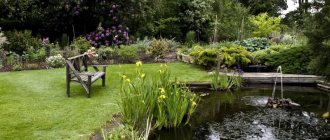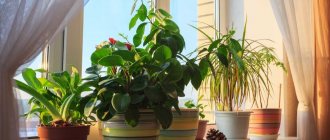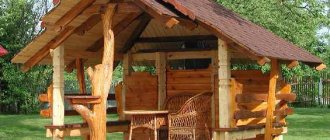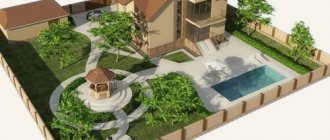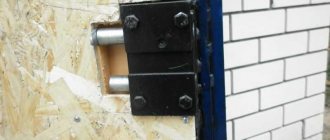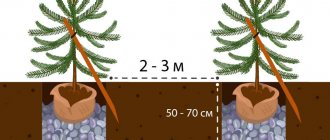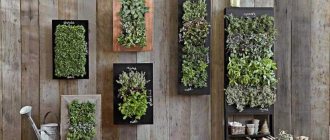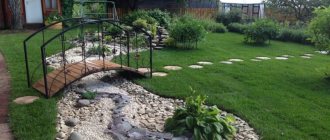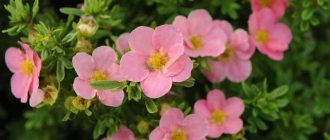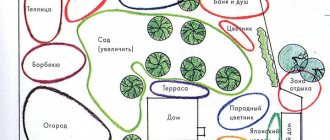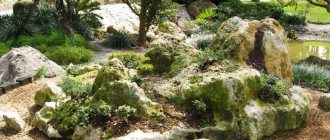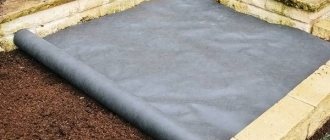Site development
All owners of their own home or suburban area dream of simplifying gardening and construction work as much as possible. One of the popular ways to simplify the process of landscaping, as well as designing artificial reservoirs and other important landscape works, will be the use of geotextiles. This material is safe, environmentally friendly, and is widely used in the garden. We propose to consider the advantages of agrofibre, features and methods of its use on the site.
- 1 Types of geotextiles and their application
- 2 Advantages of using geotextiles in garden design
- 3 Use of road geotextiles on your site
- 4 The use of garden geotextiles in landscape design 4.1 The use of non-woven geotextiles in the waterproofing of reservoirs
- 4.2 Greening the roof is another option for using geotextiles in the country
- 4.3 Formation of foundations and drainage systems
Types of geotextiles and their application
There are several technologies for the production of raw materials - woven and non-woven geotextiles, on the basis of which they are classified:
- Needle-punched non-woven. Its production involves pulling fixing threads through the warp using serrated needles. This material guarantees strength and excellent water permeability. Needle-punched geotextiles have found application in the formation of drainage.
- Thermally bonded non-woven. The production of the material involves heat treatment of the canvas. During its execution, the fibers melt and adhere tightly to each other. Such raw materials are durable, but have reduced filtration qualities.
Thanks to its own properties, Dornit geotextiles have found application in construction, gardening, and other areas of landscaping in suburban areas. It should also be understood that the material is divided by density - from 80 to 600 g per m². The scope of use of raw materials also depends on this indicator. For example, the most popular use of geotextiles is 100, 150 g per m², 200 g per m². These non-woven fabrics are lightweight, they are actively used as a filter material in drainage systems, to protect the territory from weeds, and to arrange various paths.
Non-woven material with a medium density - from 200 to 350 is actively used to protect soil from erosion, separate layers of soil, and strengthen the soil. A dense type of material – from 350 to 600 – is actively used as cushions in geomembranes to equip dams, swimming pools, and coastal areas.
You can also check out “How to make a small pond with your own hands”
Advantages of using geotextiles in garden design
The use of geotextiles largely depends on its characteristics. The special technology for creating the material guarantees several advantages of the raw material:
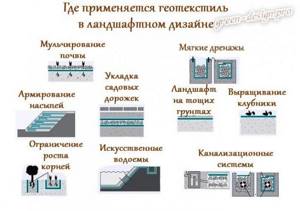
- High level of environmental friendliness. The canvases do not decompose into chemical elements, so they do not harm human health or nature.
- Strength. Non-woven fabrics are resistant to deformation, mechanical flaws, piercing and tearing loads. This eliminates damage to the material during installation.
- Resistance to environmental factors. The canvases do not rot, do not rot, do not silt, they are very resistant to ultraviolet rays, various types of acids, alkalis, and substances of organic origin.
- Easy to install. The raw materials are sold in the form of small and light rolls, so they are extremely convenient for transportation and cutting with a knife or scissors.
- Low pricing policy. The material is an ideal ratio of price and quality, therefore it is actively used in industrial construction and for domestic needs.
The wide scope of operation makes the purpose and use of geotextiles a universal solution to many problems.
The use of road geotextiles on your site
Since this material is actively used in road construction, a popular area is the use of geotextiles for garden paths. The canvases allow you to separate layers to reduce the level of load on the base of the structure. Also, such raw materials are an excellent solution if it is necessary to reinforce the soil, which is especially important when moisture levels are high.
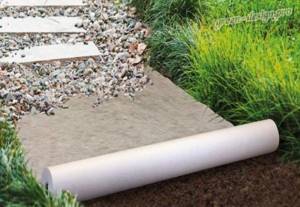
When arranging garden paths, you can profitably use another property of the canvas - to prevent pressing of crushed stone, thereby guaranteeing a higher level of compaction. In addition, thanks to the use of raw materials, it will be possible to achieve the following results:
- reduce the cost of purchasing sand or crushed stone;
- reduce the time required for the construction process;
- reduce the cost of further maintenance of a parking lot or garden path.
Agrofibres are also actively used for the formation of open areas around the house and the formation of rocky gardens. Thanks to this material, it will be possible to create beautiful patio areas, divide and build various types of embankments, and strengthen surfaces. It is impossible to imagine the creation of children's playgrounds in suburban areas without the use of agrofibre.
How to lay geotextiles at the dacha
In construction, before working with geotextile fiber, the soil is carefully leveled and covered with a layer of sand and gravel. For garden work, precise leveling and planning of the base is not required, but some points still need to be taken into account.
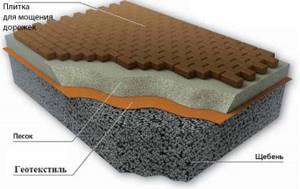
To effectively lay garden paths with tiles, geofabric is laid on the bottom layer of crushed stone. Sand or a dry mixture of tile adhesive is poured on top. Now you can easily and evenly lay out the sidewalks of your garden
Method #1 - laying geofiber for beds and flower beds
To form beds and flower beds, a layer of soil is removed by 30-50 cm. The bottom of the future flower bed or vegetable garden is covered with sand to a depth of 5-10 cm and laid out with agrofibre so that its edges cover the entire ditch, reaching the surface layer of the earth. Then the remaining layers of the bed are laid: drainage (if necessary) and black soil.
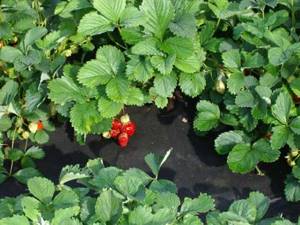
Agrofibre will help to significantly increase the productivity of garden strawberries. You need to cut small holes in it and lay the material on the prepared soil. Fruit bushes are planted in the holes. The soil and roots retain moisture, and weeds stop disturbing the plantings and owners
Method #2 - installation of geotextiles for country ponds
A layer of gravel and sand is poured into the prepared pit for the bowl of a garden fountain or pool. High-quality waterproofing material is laid out and geotextile fiber is placed on top.
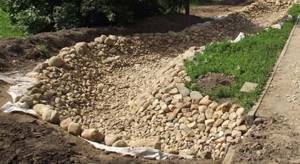
The creation of ponds in the garden plot is also not complete without geotextile fabric. So, you can create a real mountain stream with a bottom made of decorative stone if you lay a layer of geotextile over the waterproofing and cover it with beautiful stones on top
Now you can decorate the bottom of the pool with granite or pebbles. A permanent pool with a finished finish can also be covered with geofiber if you want to decorate the bottom with stone or glass boulders, pebbles, granite or multi-colored stones.
Geotextiles are an inexpensive, innovative material that will help create a unique design and impeccable landscape for your garden. The affordable price and ease of working with agrofibre makes it especially attractive for gardeners who do not have construction skills and special equipment. Working with geotextile fabric in the garden offers new opportunities for the modern summer resident.
The use of garden geotextiles in landscape design
The use of geotextiles in landscape design is a solution to many problems. For example, when improving a site on low-fertility land, there is always a need to increase the upper yield layer. To prevent it from being washed out, agrofibre is spread under the ground.
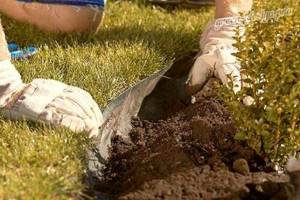
This material is also used to limit the growth of garden or flower crops with a branching root system. Agrofibre also prevents the development of weeds so that beneficial plants can fully nourish the roots of domestic crops.
You cannot do without this cloth even during sharp frosts in the spring, in order to protect plants from temperature changes. By covering the plantings with agrofibre, you don’t have to worry about their full development. The material will also save you in the summer; they cover the tender leaves of vegetable or flower crops to protect them from scorching ultraviolet rays.
The use of non-woven geotextiles in waterproofing reservoirs
Various artificially created reservoirs are popular when creating an original landscape for an area. When forming miniature reservoirs or large ponds, you cannot do without special waterproofing work.
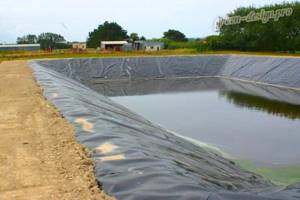
When constructing such water features, the bottom of the pit is lined with a layer of sand or gravel, and then agrofibre is placed there. This guarantees reliable protection of the waterproofing layer from stones and other decorative elements that will be used to decorate reservoirs.
Greening the roof is another option for using geotextiles in the country
“Green” roofs are very popular in summer cottages. To make them, you cannot do without non-woven fabrics. Agrofibre is used to separate layers. It is placed between the humus and the drainage layer.
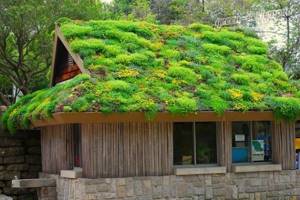
Non-woven fabrics are also used to form inversion roofs. They prevent loading material and insulation from getting between the located slabs.
Formation of foundations and drainage systems
Any building is built on a reliable and solid foundation. For example, a concrete foundation often suffers from groundwater. To improve monolithic foundations, a thermally bonded type of raw material is used.
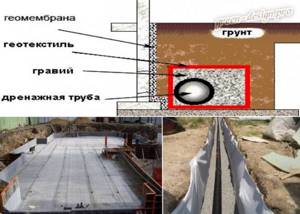
It not only guarantees high-quality drainage properties, but also separates the layers and prevents prolonged contact of moisture and the concrete surface. When constructing drainage systems, needle-punched material is also often used. It is used to create soft drainage and is also used to create sewer systems for a private home.
You can also learn “How to create site drainage with your own hands”
As you can see, the use of geotextiles can solve several problems in landscape design at once. Agrofibre will simplify the process of arranging a site, help fight weeds, provide excellent drainage and protect crops from bad weather.
Types of Landscape Geotextiles
Before purchasing geotextile fabric, you must determine how dense the material should be. Most often, landscape designers use coatings with a density of 200 g/m2 or more. After all, they differ not only in quality indicators, but also in the optimal level of strength. But the filtration capabilities of this geotextile fabric are less significant. Denser materials can be used if a huge amount of water will be placed in an artificial reservoir.
